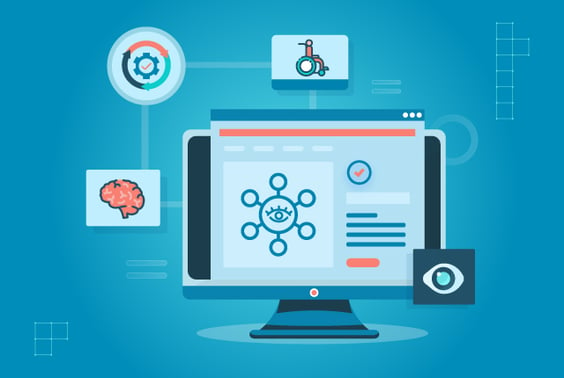
Why Accessibility testing is Important?
Accessibility testing helps to ensure that websites and apps are effortless for everyone to use. For people with disabilities like trouble seeing or hearing, using an application without accessibility can be challenging.
In accessibility testing development, teams focus on various mandatory aspects per disabled user convenience, i.e., screen magnification, speech recognition, screen reading, etc.
The advantage of automated accessibility testing is its efficiency. Automated accessibility testing tools have gained popularity due to their ability to quickly scan huge volumes of code and identify issues related to web content accessibility guidelines. By adding these tools to the development workflow, developers can find many problems early in the process without manually examining the web pages.
How Automation acts as a solution in Accessibility Testing?
- Integration of Testing Tools: Tools like Axe, Pa11y, and WAVE offer browser extensions, command-line interfaces, and APIs for integration. Integrate these tools into continuous integration (CI) systems, ensuring accessibility checks are performed automatically during the build process.
- Regression Testing: Automated regression tests for accessibility ensure that new code changes do not introduce new issues. It helps maintain a consistent level of accessibility throughout the development lifecycle.
- Vast Coverage of Functionality: Automated tests cloak an enormous range of accessibility challenges on the website, as accessibility favors disabled customers. Thus, properly working keyboard navigation, page navigation, screen reading, etc., has become mandatory and easily testable via automation rather than manually.
- Tests Reiteration: Different builds and releases occasionally occur for an application; testing them manually consumes bandwidth. Thus, repeating the same automated tests ensures the accessibility of an application.
- Enhancement of Product Quality: Most disabled customers globally use an application; thus, testing each part becomes obligatory. Automated tests run in the loop, which helps probe issues arising from code changes. It helps fix them early in the development cycle, enhancing product quality.
- Panoramic Design From the Initial Stage of Development: The development team initiates the accessibility of an application from the initial stage of the development cycle. Through the assimilation of the application's accessibility checks during the development cycle, the team designs an application in a way that helps disabled people from its inception. Also, the team keeps the focal point to maintain the standards and laws of Web Content Accessibility Guidelines" (WCAG) guidelines.
As technology evolves, software companies persistently develop new technologies and solutions for improving applications' usability for disabled people, from continuous development to improvement of note-takers, screen readers, communication devices, voice assistants, assistive keyboards, and mice. Therefore, it creates an equilibrium between able and disabled people to use the same application.


Post a Comment